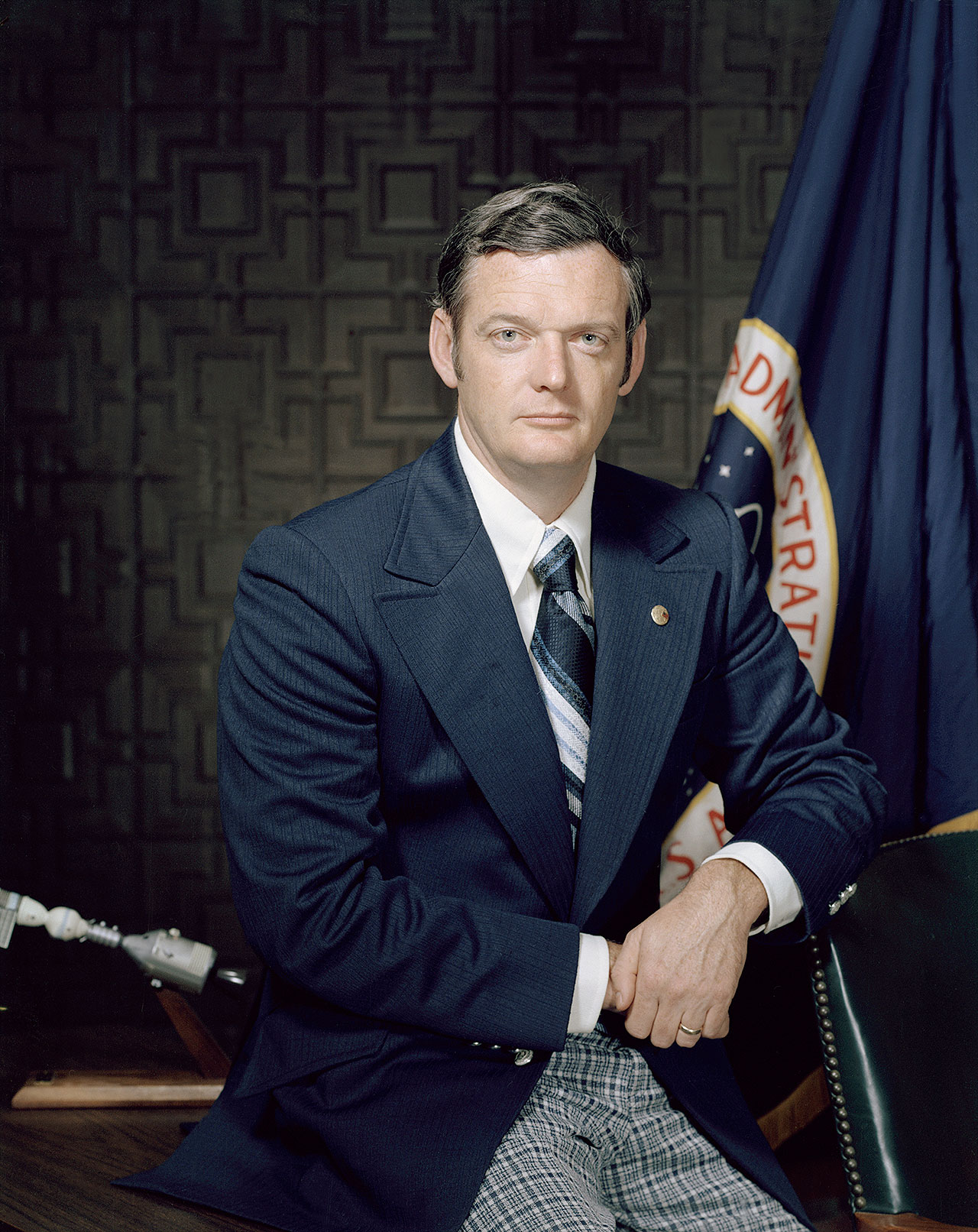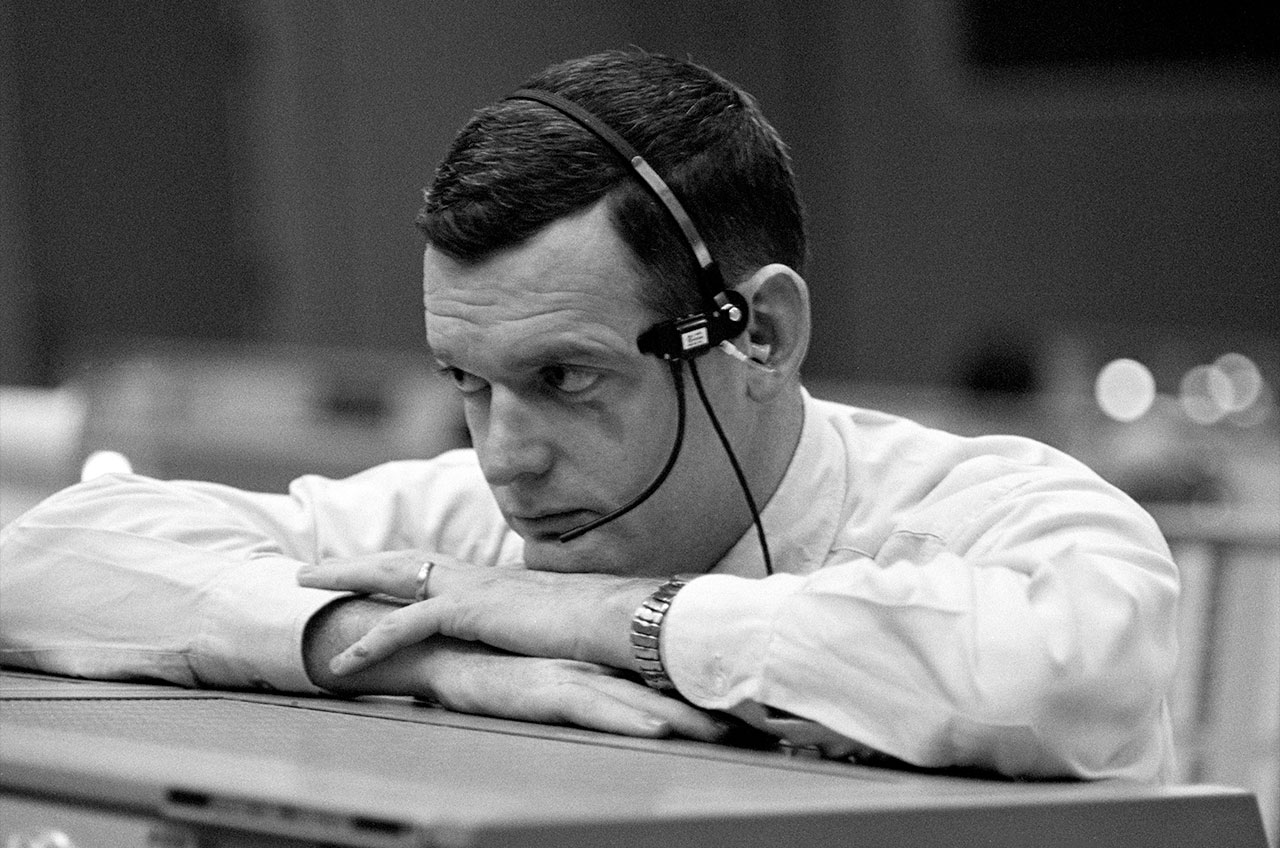Glynn Lunney, NASA flight director who led from 'trench' to the moon, dies at 84
Lunney led Mission Control during some of NASA's most challenging and triumphant hours.

An engineer who was involved from the start in NASA's efforts to launch the first astronauts into space and who later led Mission Control through some of its most challenging and triumphant hours, flight director Glynn S. Lunney has died at the age of 84.
Lunney's death on Friday (March 19) was confirmed by NASA. A family friend said that Lunney died after a long illness.
"Glynn was the right person for the right time in history," Mark Geyer, director of NASA's Johnson Space Center in Houston, said in a statement. "His unique leadership and remarkably quick intellect were critical to the success of some of the most iconic accomplishments in human spaceflight."
"While he was one of the most famous NASA alumni, he was also one of the most humble people I have ever worked with. He was very supportive of the NASA team and was so gracious in the way he shared his wisdom with us," said Geyer.
Lunar legacy: 45 Apollo moon mission photos

Lunney was working for the National Advisory Committee for Aeronautics (NACA) as a co-op student in 1958, when he was recruited by the newly formed NASA at the age of 22. The youngest member of the Space Task Group, he and his colleagues at Langley Research Center in Hampton, Virginia, were charged with figuring out how to send the first astronauts into space.
Initially, Lunney was assigned to develop the simulated missions that were used to train other flight controllers. His position for the early Project Mercury flights was at a remote tracking station.
Get the Space.com Newsletter
Breaking space news, the latest updates on rocket launches, skywatching events and more!
"I was at the Bermuda station," he said in a 1999 NASA oral history interview. "Bermuda is 800 miles [1,300 km] or so out in the ocean away from Florida, where we launched [the missions], and the place where the vehicle went into orbit was about halfway in between."
"Since this was at the very horizon from the Cape [Canaveral, Florida] and going out of sight, there was some question about how well we could know whether the vehicle was in orbit or not. So I started off as a flight dynamics officer at the control center in Bermuda, and I was there for a number of the flights — both unmanned and manned."
After the 1962 launch of John Glenn on the first U.S. crewed mission to orbit Earth, Lunney worked the final three original astronaut missions from the Mercury Control Center in Florida, before becoming chief of the flight dynamics branch.
"We had a wonderful collection of characters," Lunney said. "We called the front row the 'trench.' I don't know who came up with that early on or what it even came from, but we called the front row the 'trench,' and the three console operators that were involved in that saw themselves as a team that was controlling all of the trajectory aspects, orbital mechanics aspects, of the flight."

In 1964, as the Gemini program was getting underway, Lunney was selected to become a flight director. One of the first four people to lead Mission Control, Lunney led the "Black team." (Each flight director chose a color: Chris Kraft, John Hodge and Gene Kranz chose red, blue and white, respectively.) After overseeing Apollo test flights, Lunney led his first shifts in the Mission Operations Control Room in the Mission Control Center at NASA's Manned Spacecraft Center (today, Johnson Space Center) for the Gemini 9 mission in 1966.
"So I came back, and several of us ... were the primary players, primary flight director team that operated on the last number of Gemini spacecraft when our senior leadership, represented by [Kraft], went over to start getting ready for Apollo," Lunney said. "The things that we got to do in Gemini really prepared the total operations team — the people in the control center, the astronauts and then the engineering team that supported that — that whole team of people came together doing the Gemini program and we did almost everything you could do in Earth orbit."
As NASA's focus turned to the moon, "Black Flight" led shifts for the first Apollo mission, Apollo 7; the first mission to orbit the moon, Apollo 8 (and, at around the same time, Lunney was named chief of the flight director's office); the dress rehearsal for the first lunar landing, Apollo 10; and then the historic first landing, Apollo 11, during which he oversaw the ascent from the moon and rendezvous with the command module in lunar orbit.
Related: NASA's historic Apollo 11 moon landing in pictures

"Great time. I was — how old was I? I was 32, I guess, at the time we landed on the moon. I'd been doing this for eight years or so before that time, but — yes, I was kind of young at the time. We were all fired up, of course, the whole time, but events like that just supercharged that sense of energy and excitement about it. It was really powerful. Great stuff," he said.
It was his next mission as flight director, though, that Lunney called the best of his career.
Lunney and his team were just about to come on console for the evening shift on April 13, 1970, when the Apollo 13 crew radioed, "Houston, we've had a problem."
"For me, I felt that the Black Team shift immediately after the explosion and for the next 14 hours was the best piece of operations work I ever did or could hope to do," Lunney said in his oral history. "It posed a continuous demand for the best decisions often without hard data and mostly on the basis of judgment, in the face of the most severe in-flight emergency faced thus far in manned spaceflight."
"We built a quarter-million mile space highway, paved by one decision, one choice, and one innovation at a time — repeated constantly over almost four days to bring the crew safely home. This space highway guided the crippled ship back to planet Earth, where people from all continents were bonded in support of these three explorers-in-peril," he said. "It was an inspiring and emotional feeling, reminding us once again of our common humanity. I have always been so very proud to have been part of this Apollo 13 team, delivering our best when it was really needed."

Lunney led his final shifts as a flight director during the Apollo 14 and Apollo 15 missions, before moving into management, serving as the technical assistant for Apollo to the director of flight operations and then becoming the technical director for the U.S. side of the Apollo-Soyuz Test Project that was jointly flown with the Soviet Union in 1975.
Then, after heading up payload integration for the space shuttle, Lunney reported to NASA Headquarters in Washington, to serve as deputy associate administrator for spaceflight and acting associate administrator for space transportation operations. Lunney then returned to Houston to become shuttle program manager before retiring from NASA in 1985.
Glynn Stephen Lunney was born in Old Forge, Pennsylvania, on Nov. 27, 1936. He graduated with a bachelor's degree in aeronautical engineering from the University of Detroit in 1958, when he saw his first drawing of what would become the Mercury capsule, igniting his desire to join NASA.
After his 27 years at the space agency, Lunney went to work for Rockwell, overseeing the division of the company building Global Positioning System (GPS) satellites. He then worked on the space station before returning to the shuttle, becoming vice president and program manager for United Space Alliance (USA), a company equally owned by Rockwell (later, Boeing) and Lockheed Martin, that supported NASA's spaceflight operations contract.
For his service to the U.S. space program, Lunney was honored with the NASA Distinguished Service Medal, NASA Exceptional Service Medal and was awarded the Presidential Medal of Freedom as a member of the Apollo 13 mission control team. In 2005, Lunney was bestowed the National Space Trophy from the Rotary National Award for Space Achievement Foundation.
Lunney is a co-author of the 2011 book, "From the Trench of Mission Control to the Craters of the Moon," which he wrote with his fellow members of the Gemini and Apollo-era flight dynamics branch.
Lunney was portrayed on screen by actor Marc McClure in the 1995 feature film "Apollo 13" and by actor Jackson Pace in the National Geographic series "The Right Stuff" for Disney+. Lunney appeared as himself in the 2017 feature-length documentary, "Mission Control: The Unsung Heroes of Apollo."
Lunney is survived by his wife of 61 years, Marilyn Kurtz, and their four children, Jennifer; Glynn, Jr., Shawn and Bryan. The latter, Bryan, is NASA's first second-generation flight director.
Follow collectSPACE.com on Facebook and on Twitter at @collectSPACE. Copyright 2021 collectSPACE.com. All rights reserved.
Join our Space Forums to keep talking space on the latest missions, night sky and more! And if you have a news tip, correction or comment, let us know at: community@space.com.

Robert Pearlman is a space historian, journalist and the founder and editor of collectSPACE.com, a daily news publication and community devoted to space history with a particular focus on how and where space exploration intersects with pop culture. Pearlman is also a contributing writer for Space.com and co-author of "Space Stations: The Art, Science, and Reality of Working in Space” published by Smithsonian Books in 2018.In 2009, he was inducted into the U.S. Space Camp Hall of Fame in Huntsville, Alabama. In 2021, he was honored by the American Astronautical Society with the Ordway Award for Sustained Excellence in Spaceflight History. In 2023, the National Space Club Florida Committee recognized Pearlman with the Kolcum News and Communications Award for excellence in telling the space story along the Space Coast and throughout the world.










